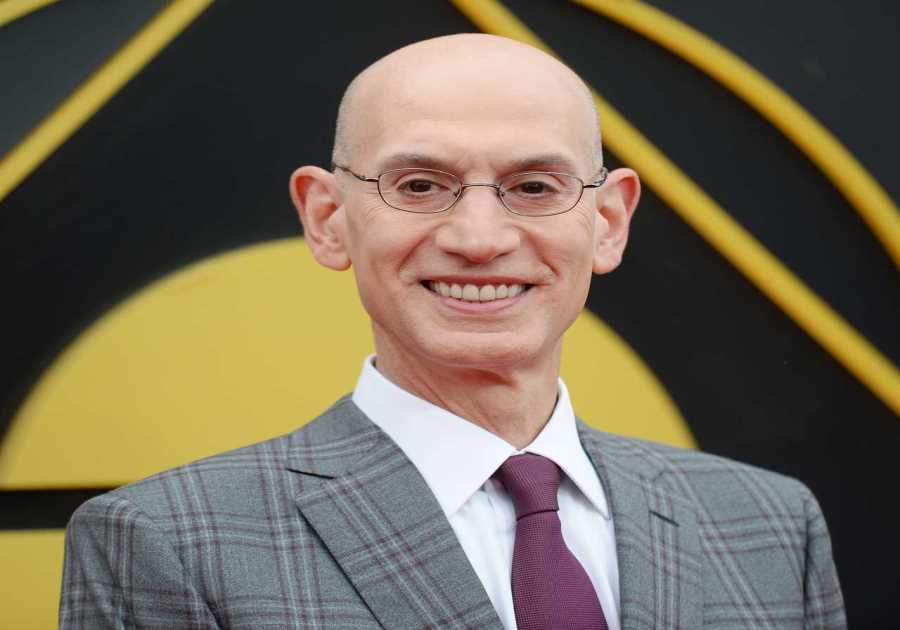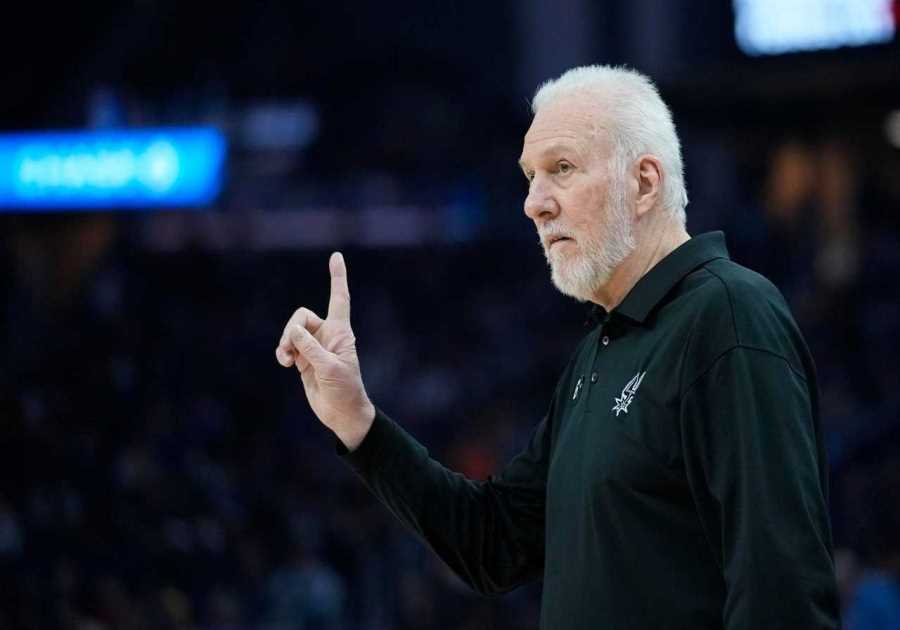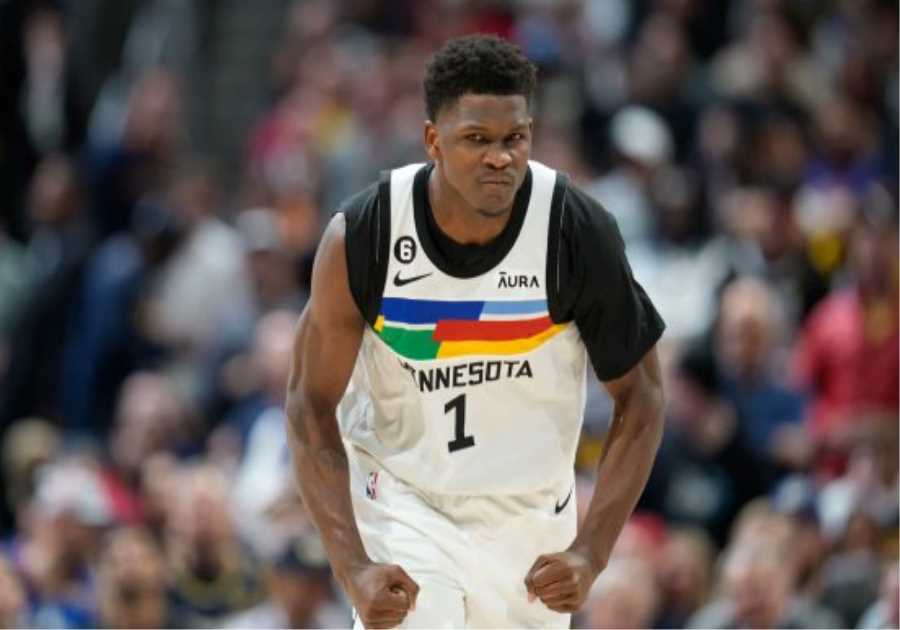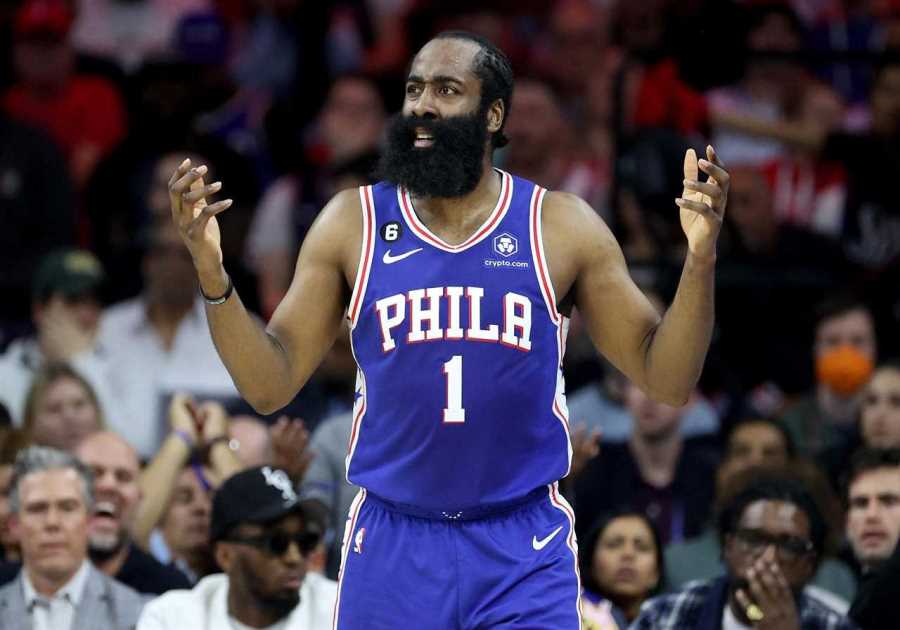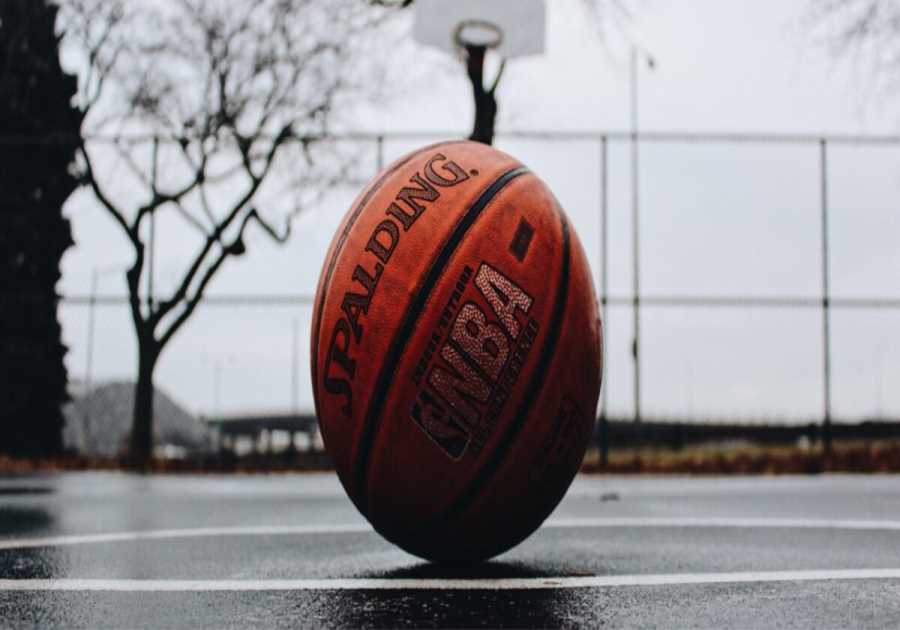
After the most-watched NBA Playoffs in five years, but one of the least-watched NBA Finals on record, where does the league’s postseason stand in the ratings?
The 2023 NBA Playoffs averaged a 2.7 rating and 5.12 million viewers across ABC, ESPN, TNT and NBA TV, marking the highest average in five years (2018: 5.21M) and third-highest in a decade. After bottoming out at a 1.8 and 3.08 million in the fanless summer and fall “bubble” of 2020, playoff viewership has increased in three-straight years.
Despite the five-year high, the postseason ended on a quiet note as the five-game Nuggets-Heat NBA Finals topped only the COVID-delayed series of 2020 and 2021 as the least-watched since 2007. The NBA’s overall health as a television product is often judged on the basis of the Finals, as those are the highest rated and most-watched games of a given season.
With the past four Finals ranking among the six least-watched on record, some of the league’s critics have argued that the numbers show a sharp and lasting reduction in popularity that is unique to the post-2020 NBA. This argument suggests that the greater-than-usual activism exhibited by NBA players during the 2020 “bubble” turned off fans, perhaps permanently. These claims are usually supported by citing viewership for the Finals in isolation. By contrast, the following analysis is supported by three decades of postseason data, comparisons with other leagues, and at least some mention of the overall trends facing television.
Viewership is down — everywhere
There is no denying that the past four seasons have been lesser-watched than those that came before. As noted, the past four years have produced four of the six least-watched NBA Finals on record.
What is often ignored in spotlighting the NBA’s downturn is how similarly other sports have fared. Just three and a half years in, the 2020s have included the three least-watched World Series, the three-least watched final rounds of the Masters, the four-least watched Daytona 500s, three of the four least-watched NCAA men’s basketball title games, three of the five least-watched college football national championship games, three of the five least-watched Stanley Cup Finals — and that is an incomplete list.
Viewership is not down across the board, and there are a number of exceptions — last year’s World Cup, the Super Bowl, even the Kentucky Derby (which outside of 2020 has avoided all-time low territory). Nonetheless, there is simply no truth to the the idea that the NBA is alone in having several of its least-watched championship series in a short amount of time. It has plenty of company.
It seems unlikely that all of these sports are suffering from some activism-related tune-out. Unless one is to argue that the NBA is wholly unique from the other sports dealing with the exact same trend, there must be another explanation.
Fewer people are watching linear television
Viewership for the 2023 playoffs was the highest in five years, but the share — the percentage of viewers tuned to a program out of the total number watching linear television — was the highest in 25. This year’s playoffs averaged 10 percent of the linear viewing audience, the highest since 11 percent in Michael Jordan’s final postseason of 1998.
By comparison, the share in the 2018 postseason — the most-watched of the past decade — was 6.25%. Not only was that number exceeded by this year’s playoffs, but also last year (8.4%) and even the May-July postseason of 2021 (6.8%).
The explanation is that far fewer people are watching linear television than had been commonplace even just a decade ago. As noted in the previous NBA deep dive in April, linear television viewing during the NBA regular season declined by nearly half from 112.9 million in 2012-13 to 63.8 million in 2022-23. As fewer viewers watch linear TV, any amount of viewership will account for a greater share of the reduced audience.
The NBA Finals is a prime example. The past two Finals rank as the least-watched non-COVID editions since 2007. Yet both averaged a higher share of viewers watching television — 19.8% for Warriors-Celtics last year and 19.7% for Nuggets-Heat this year — than even the last Warriors-Cavaliers Finals in 2018 (19.4%). That Finals still averaged nearly 18 million viewers, and one can bet the networks would gladly sacrifice some share to go back to the higher viewing levels of just five years ago.
The effect is even sharper in the young demographics. Monday’s Finals Game 5 averaged a 4.0 rating and whopping 36% share in adults 18-49, meaning that only 4% of adults under 50 accounted for 36% of the demographic’s television viewing. That 36 share is among the highest for any Finals game in that demo in the past 30 years. In 1998, Game 2 of the Bulls-Jazz Finals had the same 36 share in the demo — with an 11.6 rating.
Rising shares are cold comfort given the long-term implications for television viewing. Nonetheless, they do show that viewership is not declining at the same rate as the rest of television, a key reason why the NBA — and many other live sports properties — are increasingly valuable relative to the non-sports competition.
The big shrinking fish in the small shrinking pond
On May 31, 2011, LeBron James’ first NBA Finals game with the Miami Heat averaged 15.1 million viewers on ABC. The same night, NBC’s “America’s Got Talent” averaged 15.3 million. That was the last time, outside of the “bubble,” that an NBA Finals game failed to rank as the most-watched of the night.
Twelve years later, every game of the Nuggets-Heat NBA Finals more-than-doubled the night’s top non-NBA show (A “60 Minutes” special on CBS was the only show to crack the four million mark opposite the Finals). The NBA Finals does not just win nights anymore, it dominates them — as much a show of strength for the league as it is a display of weakness from the rest of TV. Non-sports programming simply cannot compete in this era, and as a result the NBA now wins nights not just in the Finals and conference finals, but in the first and second rounds. Heat-Celtics Game 7 in the conference finals averaged better ratings in the key adult demographics than the Academy Awards, something that would have been unthinkable a decade ago.
Taken with the share, the NBA’s dominance of the rest of television makes it arguably a stronger draw today than in higher rated years gone by. Then again, dominating TV means something different in 2023 than in, say, 1998. Twenty-five years ago, linear TV accounted for nearly all of the viewing options in any given home (the VCR being the only real alternative). Today, it accounts for just a fraction of an entertainment ecosystem that includes the like of YouTube and TikTok. Until those platforms can be measured and monetized like television, they will not pose a real financial threat to the NBA or the other leagues — but they already qualify as serious competition for viewers.
Even with that caveat, the league is in far better shape versus the competition today than even in the halcyon days of Bird vs. Magic in the 1980s. Games 1 and 2 of the 1987 Celtics-Lakers Finals ranked #26 and #20 for the week on television behind a slew of reruns (as seen in this graphic).
More recently, Games 1 and 2 of the 2005 Spurs-Pistons NBA Finals ranked eighth and ninth for the week on television with 10.6 and 10.7 million viewers respectively. That trailed ABC’s “Dancing With the Stars” (15.1M), a rerun of the CBS show “CSI,” a whopping three reruns of the CBS show “Two and a Half Men” (11.5, 11.4 and 10.9M) and an ABC “Primetime Live” special (11.2M). That 2005 series, which went seven games, ended up averaging more viewers (12.5M) than any post-COVID Finals — but nobody would honestly suggest the league was a better draw then than now.
The league has seen far worse days
As with the regular season, the true collapse in NBA playoff viewing coincided with the retirement of Michael Jordan after the 1998 season and was exacerbated by the league’s move from a broadcast-heavy deal with NBC to a cable-heavy agreement with ESPN in 2002. The combination of Jordan and NBC led to some now-unfathomable numbers, including 18.4 million for a second round Game 4 against the Knicks in 1996.
NBA playoff viewership sank 48 percent in the six years from Jordan’s last postseason in 1998 (7.7M) to 2003 (4.0M). It sank by a third over an overlapping six-year stretch from NBC’s last postseason in 2002 (5.4M) to 2007 (3.6M). (Overall, viewership plunged 53 percent in less than a decade from ’98 to ’07). The league did not start to bounce back until 2008 (4.9M) and fully recovered — if not to Jordan levels, then at least to the late NBC years — from 2009-13, a stretch that included back-to-back championships for Kobe Bryant’s Lakers and the LeBron James-led Miami “Heatles” (5.5-6.0M).
The Lakers’ decline and James’ departure from Miami marked the end of that resurgence, with the playoffs stabilizing around the 2008 range from 2014-19 (4.8-5.2M). After the COVID-era plunge in 2020 and 2021, the numbers have largely returned to that same level, with this year’s audience of 5.1 million down just two percent from five years ago (5.2M). That is not quite an apples-to-apples comparison due to the inclusion of out-of-home viewing (which was not included in Nielsen final nationals prior to 2020), but decline in household ratings (-14%) is still modest compared to where the league stood five years after Jordan’s retirement.
Same old, same old
The scrutiny of NBA ratings is nothing new. It was preceded by an almost identical scrutiny of NFL ratings that is now largely forgotten by its most ardent adherents (many of whom now use the NFL to provide unflattering contrasts with the NBA). The argument against the NBA is not that it is less of a draw than it was ten or 30 years ago — at least on linear television, that is true — but that the league “destroyed its brand.”
That kind of overheated claim may find an audience on social media, but the evidence is painfully thin. Outside of the COVID-era collapse in 2020 and 2021, there is nothing particularly striking about NBA ratings of late. In short, the league is experiencing the exact same trend as any number of other marquee sporting properties and it has weathered far sharper and far longer ratings declines than it is currently experiencing.
There is a real decline in viewing — not limited to the NBA — that almost certainly has less to do with the culture war than with a sharp and worsening decline in linear television viewing. That trend is not inexorable (as evidenced by the five-year high for the playoffs), but it takes some luck to avoid.
The NBA got lucky in the first three star-studded rounds of this year’s playoffs, and less so in the Finals. As time goes on and the present greats retire, that luck will be harder to come by until the next generation of stars rises to the fore. This year may well be the high water mark of the playoffs for the foreseeable future, given how much broke right for the league.
Whether the ratings go up or down, one can be sure that rumors of the league’s demise will continue to be greatly exaggerated.
The post NBA ratings deep dive, part II: Playoffs and Finals appeared first on Sports Media Watch.
Jon Lewis
https://www.sportsmediawatch.com/2023/06/nba-ratings-analysis-deep-dive-playoff-finals-viewership/
By: Jon Lewis
Title: NBA ratings deep dive, part II: Playoffs and Finals
Sourced From: www.sportsmediawatch.com/2023/06/nba-ratings-analysis-deep-dive-playoff-finals-viewership/
Published Date: 06-16-2023
Frequently Asked Questions
What are the salaries of NBA players?
The NBA's average salary was $7.3million during the 2021-2022 season. This figure is based the maximum salary cap of $134million, which was set in this season. Individual player salaries may vary depending on their achievements and experience.
Kevin Durant and LeBron Jones are both superstars who can make up to $40m a year. However, rookies could only make $898,310. Other veteran players could be eligible for exception salaries that range from $4.76million to $9.258million, depending on how many years they have been playing. Based on team performance, players could also earn incentives or bonuses.
What is a trade exemption in NBA?
A trade exception in NBA allows teams to trade away any player. This exception allows teams the opportunity to acquire players whose salaries exceed those of the players they have traded away, without having to make corresponding salary moves. This exception can be used by a team for multiple seasons and does not count towards their salary cap. Trade exceptions can be used by teams to modify their rosters, without having to cut salaries or alter their roster composition. This helps to keep the teams in competition and avoid unfair advantage situations due to financial circumstances.
It also keeps the league financially stable, and ensures teams have the ability to make moves without worrying if they can afford them. Trade exceptions are an important part of the NBA's roster construction and can be used by teams to compete for championships.
Which NBA player has the most blocked shots in one season?
Mark Eaton's 1984-85 season set new records in blocks (456) as well as blocks per game (5.56). Eaton's total in that season was the highest single-season NBA number.
Hakeem Olajuwon holds the NBA Record for Most Career Blocks with 3,830. Olajuwon played 1,238 games over his 18-year tenure and averaged 21.8 point, 11.1 rebounds and 2.5 assists per game.
Who is the greatest free throw shooter of all?
Although the question remains open to debate among basketball enthusiasts, many agree that Stephen Curry of Golden State Warriors is the greatest free throw shooter. This fantastic player set the record for most 3-point conversions in a season with an incredible 402.
Karl Malone holds the record for making the most free throws in a single career with 9,787 of them succeeding. With 13,188 attempts, Malone has attempted 74.20% more free throws than any other player.
Who holds record for most NBA career playoff wins?
LeBron Jam is the leading figure in the NBA Playoffs history with 174 wins and 266 games, so it's no surprise that he's one of the most sought after basketball players.
Statistics
- Williams would 'likely' accept a deal worth $14-15M/year; Celtics are 'unlikely' to offer such a deal (HoopsHype) (bleacherreport.com)
- The opening game of the 2020 Finals between the Los Angeles Lakers and Miami Heat brought in only 7.41 million viewers to ABC, according to The Hollywood Reporter. (en.wikipedia.org)
- An estimated 800 million viewers watched the [105]2017–18 season. (en.wikipedia.org)
- Williams would 'likely' accept a deal worth $14-15M/year; Celtics are 'unlikely' to offer such a deal (HoopsHype) (bleacherreport.com)
- "NBA first-round ratings drop 27 percent, 40 percent since 2017–18". (en.wikipedia.org)
External Links
basketball-reference.com
- Thomas Bryant Stats, Height, Weight, Position, Draft Status and more | Basketball-Reference.com
- Dennis Schroder Stats, Height, Weight, Position, Draft Status and more | Basketball-Reference.com
twitter.com
- Tweet / Twitter
- Sam Amico on Twitter: "Timberwolves Waive PJ Dozier, CJ Elleby and AJ Lawson - Hoops Wire https://t.co/xKu1ZTuQZN" / Twitter
sbnation.com
sports.yahoo.com
How To
What compensation is offered to NBA players for being injured?
NBA players who have guaranteed contracts get their money regardless of whether they are hurt or otherwise unable to play. Some even make millions without ever playing a basketball game. Although they might lose out on bonuses and their contract could be cancelled after expiration, they will still receive the full amount. Non-guaranteed players will not typically receive any pay until their health allows them to return to the NBA. While the NBA may provide some assistance in the form of disability payments and a lump-sum settlement to those who are eligible, there is no guarantee that any payment will be made during an injury absence. Additionally, teams and the league may assist those in need on a case-by-case basis.
Team members can also help through the Injury Disability Plan. Ultimately, it depends on the individual and his team's situation. Some players might be able negotiate a buyout with the teams in order to receive money for their absence due to injury. While there is no guarantee that players will receive payment if they are injured, the league and team can offer some assistance. Each situation is different and should be evaluated individually. The NBA has comprehensive rules about injuries and payments for injury absences. Understanding these rules can help players reach agreements with their teams or make informed financial decisions about their financial security. If you have any questions or concerns it is important to talk with a professional.

